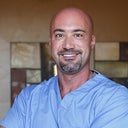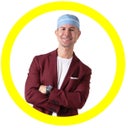Hello, Thank you for your question. I would like to start out by formally announcing that in order to avoid prejudice, I never read other surgeons answers to patient questions before answering a patient question. Now, I understand that you had a buccal fat removal surgery 10 months ago and you are not satisfied with the results. You indicate that your cheeks still seem “big“ after the procedure and one side of your face looks bigger than the other. You want to know if there is a procedure that can fix this. I have answered quite a few buccal fat removal questions recently. In one of my answers I urged the patient to find a Surgeon that truly feels confident performing this procedure. While in general identifying the buccal fat pad is not “difficult”, sometimes, certain buccal fat pads are in fact more difficult to locate the pad’s extensions. I would ask your surgeon bluntly if he or she is absolutely positive that your buccal fat pads were unequivocally identified and removed? Did your surgeon take photos of your extracted fat? Something that I am doing more and more is taking photos of the actual fat removed as a part of the patient’s record. How about your before and after photos? It is very common, almost universal that we humans have identifiable asymmetries between the left side and the right side of our faces. Sometimes we only really recognize these asymmetries once we’ve had a surgery performed and we are scrutinizing our face very closely. If the left side of your face is now much thinner than the right side of your face maybe it’s possible that your surgeon identified your buccal fat pad better on the left and not so well on the right side? Everybody has buccal fat pads. However, the size between individuals and genders varies. It should be no smaller than a prune as the average volume is about 10 mL, that’s 2 teaspoons. Also, the fat pad while it is encapsulated in the cheek and is a deep fat pad located on either side of the face between muscles, it should not be confused with the malar fat pad which is directly below the skin of the cheek. It should also not be confused with jowl fat pads. The buccal fat pad has three lobes and it has four extensions. When identifying the buccal fat pad it does not always simply jump out at the surgeon. This particular anatomical structure is actually variable between patients as discussed and requires a skilled facial surgeon because this area is also home of the buccal branch of the facial nerve (causes facial movement) and the parotid duct which guides saliva into the mouth. Some surgeons may hesitate searching for the buccal fat extensions due to fear of causing injury to sensitive anatomy. In terms of correcting your condition. This can possibly be accomplished and could certainly be attempted to at minimum the residual full side of your face. I would have a conversation with your surgeon and review your before and after photos. If you have a new significant new asymmetry, I would suggest that means your buccal fat pad was removed more so from one side than the other. It’s been 10 months since your surgery. If there was another reason for the asymmetry such as a hematoma formation after surgery, that should’ve resolved by now. 10 months after surgery you should be healed well enough to see your final result. At the least the side of your face that is still full very likely deserves to be re-explored. I hope that my input will help to guide you in coming to a resolution with your situation. I suggest you do your due diligence and have an open conversation with your surgeon and ask pertinent questions. Review your records as well as photos and maybe even the operative report. Finally, express your dissatisfaction with the final result and see what your surgeon is willing to do and say to rectify the situation. Every surgeon should stand behind his or her work and do their best to educate you and explain your particular surgery, findings and outcome and any limitations that may have been encountered during your surgery. Best regards,Dr. Mitchell

